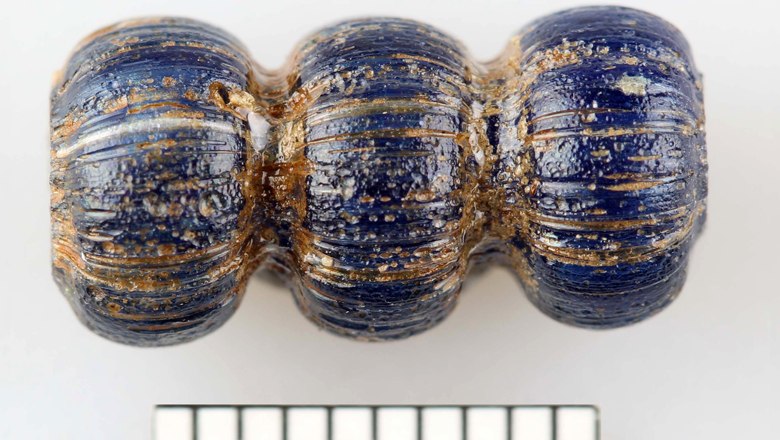The fortified settlement on the Schlossberg in Pitten
Historical sites
Description
There was a stronghold on the Schlossberg hill in Pitten as early as the Bronze Age (around 1500 BC), which was modified and expanded in the Early Middle Ages (ninth century AD) and became a centre of power.
The village of Pitten is located on the border between the regions of Buckliger Welt and Steinfeld. As an early central settlement, it has special historical significance in the south-eastern part of Lower Austria. This is demonstrated, for instance, by traces of a settlement on the Schlossberg, which was probably fortified from the Late Bronze Age onwards.
The Bronze Age burial ground
The most important Bronze Age finds are from the village of Pitten, however – an area that is now built up. There was a large field of burial mounds here, which had been covered by alluvial sand in ancient times and was excavated in the 1970s after the discovery of chance finds. The bronze tiaras, spiked discs and long cloak pins from the graves of upper-class women are particularly noteworthy.
The early medieval castle
We owe our knowledge of the settlement on the castle hill to chance finds and excavations in 1977 to 1978 and 2012 to 2014. The early medieval manor house was probably built on the westernmost part of the hill, the elevated ‘castle cliff’ with steep drops on three of its sides, where the medieval/modern castle now stands. The adjacent 2.5 ha settlement area to the east, known as the ‘castle field’, was protected by ramparts and ditches. There was another settlement terrace to the south, below the castle field. The whole complex was secured to the east by an extensive rampart-and-ditch system. There were at least two burial sites: one on the south terrace and one to the east of the ditch in the upper castle field. Clay vessels, an axe and projectile points were found in three graves here.
In early medieval times, the area probably began to be used in the second half of the ninth century. The research to date does not reveal when the site was abandoned and whether this was a result of the Hungarian invasions in the tenth century. There are currently no indications that the settlement came to a violent end, however.
The castle, referred to in written sources as “castellum Butinu(m)”, was reoccupied by the 11th century at the latest and served as a regional centre of power of the important counts of Formbach.
Tip: the PIZ1000 – Pitten Region Museum explores the village’s rich past through its valuable finds.





